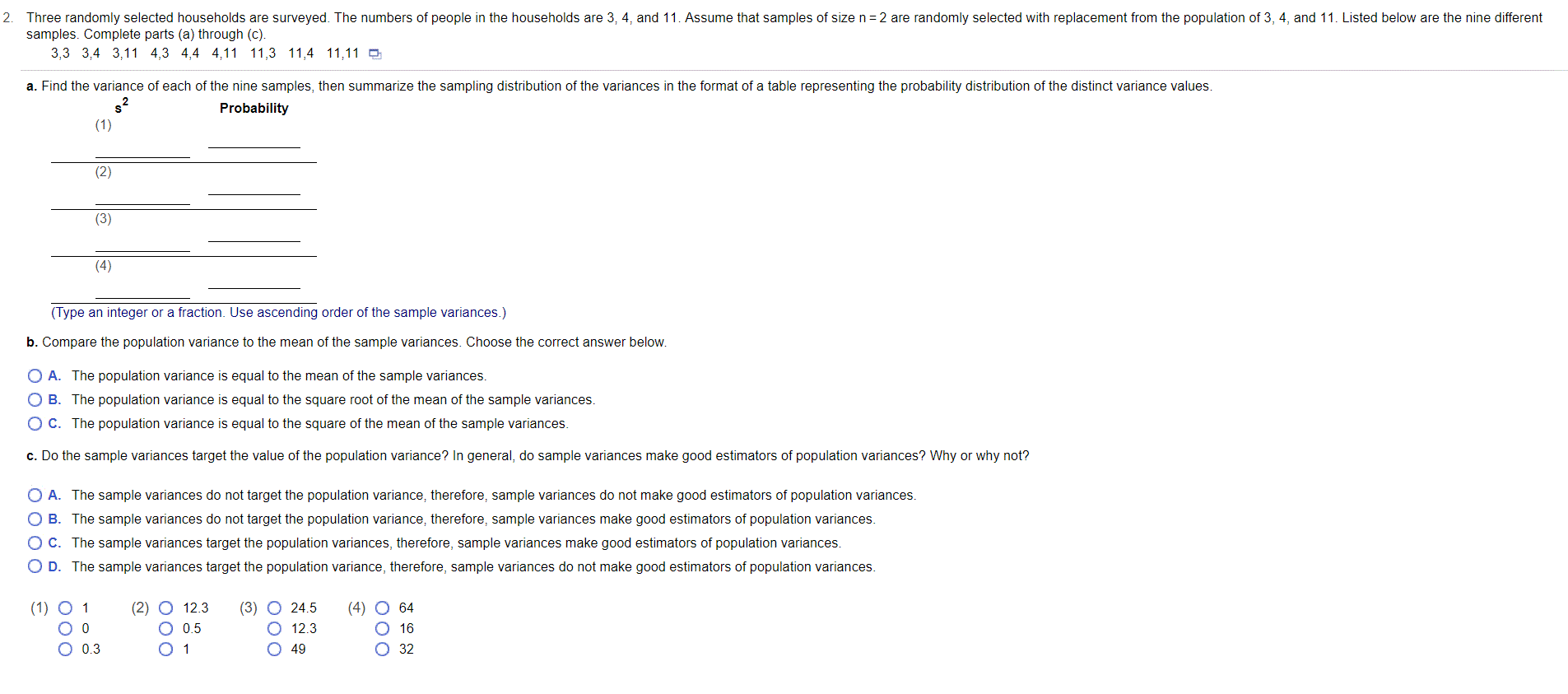Three randomly selected households are surveyed. The numbers of people in the households are 3, 4, and 11. ASsume that samples of size n = 2 are randomly selected with replacement from the population of 3, 4, and 11. Listed below are the nine different samples. Complete parts (a) through (c). 3,3 3,4 3,11 4,3 4,4 4,11 11,3 11,4 11,11 O a. Find the variance of each of the nine samples, then summarize the sampling distribution of the variances in the format of a table representing the probability distribution of the distinct variance values. Probability (1) (2) (3) (4) (Type an integer or a fraction. Use ascending order of the sample variances.) b. Compare the population variance to the mean of the sample variances. Choose the correct answer below. O A. The population variance is equal to the mean of the sample variances. O B. The population variance is equal to the square root of the mean of the sample variances. O C. The population variance is equal to the square of the mean of the sample variances. c. Do the sample variances target the value of the population variance? In general, do sample variances make good estimators of population variances? Why or why not? O A. The sample variances do not target the population variance, therefore, sample variances do not make good estimators of population variances. O B. The sample variances do not target the population variance, therefore, sample variances make good estimators of population variances. OC. The sample variances target the population variances, therefore, sample variances make good estimators of population variances. O D. The sample variances target the population variance, therefore, sample variances do not make good estimators of population variances.
Inverse Normal Distribution
The method used for finding the corresponding z-critical value in a normal distribution using the known probability is said to be an inverse normal distribution. The inverse normal distribution is a continuous probability distribution with a family of two parameters.
Mean, Median, Mode
It is a descriptive summary of a data set. It can be defined by using some of the measures. The central tendencies do not provide information regarding individual data from the dataset. However, they give a summary of the data set. The central tendency or measure of central tendency is a central or typical value for a probability distribution.
Z-Scores
A z-score is a unit of measurement used in statistics to describe the position of a raw score in terms of its distance from the mean, measured with reference to standard deviation from the mean. Z-scores are useful in statistics because they allow comparison between two scores that belong to different normal distributions.

Trending now
This is a popular solution!
Step by step
Solved in 4 steps with 3 images


